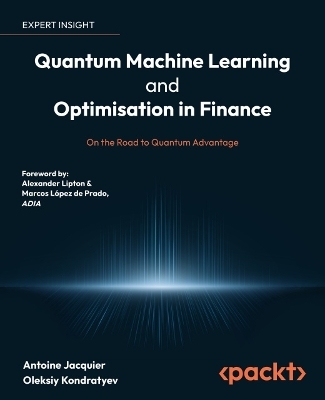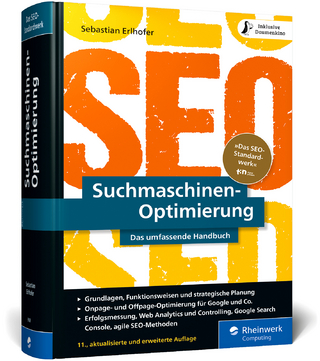
Quantum Machine Learning and Optimisation in Finance
Packt Publishing Limited (Verlag)
978-1-80181-357-0 (ISBN)
While focus is on financial use cases, all the methods and techniques are transferable to other fields
Purchase of Print or Kindle includes a free eBook in PDF
Key Features
Discover how to solve optimisation problems on quantum computers that can provide a speedup edge over classical methods
Use methods of analogue and digital quantum computing to build powerful generative models
Create the latest algorithms that work on Noisy Intermediate-Scale Quantum (NISQ) computers
Book DescriptionWith recent advances in quantum computing technology, we finally reached the era of Noisy Intermediate-Scale Quantum (NISQ) computing. NISQ-era quantum computers are powerful enough to test quantum computing algorithms and solve hard real-world problems faster than classical hardware.
Speedup is so important in financial applications, ranging from analysing huge amounts of customer data to high frequency trading. This is where quantum computing can give you the edge. Quantum Machine Learning and Optimisation in Finance shows you how to create hybrid quantum-classical machine learning and optimisation models that can harness the power of NISQ hardware.
This book will take you through the real-world productive applications of quantum computing. The book explores the main quantum computing algorithms implementable on existing NISQ devices and highlights a range of financial applications that can benefit from this new quantum computing paradigm.
This book will help you be one of the first in the finance industry to use quantum machine learning models to solve classically hard real-world problems. We may have moved past the point of quantum computing supremacy, but our quest for establishing quantum computing advantage has just begun!
What you will learn
Train parameterised quantum circuits as generative models that excel on NISQ hardware
Solve hard optimisation problems
Apply quantum boosting to financial applications
Learn how the variational quantum eigensolver and the quantum approximate optimisation algorithms work
Analyse the latest algorithms from quantum kernels to quantum semidefinite programming
Apply quantum neural networks to credit approvals
Who this book is forThis book is for Quants and developers, data scientists, researchers, and students in quantitative finance. Although the focus is on financial use cases, all the methods and techniques are transferable to other areas.
Antoine Jacquier obtained his PhD in 2010 in Mathematics from Imperial College London, where his research was focused on large deviations and asymptotic methods for stochastic volatility. Over the past 10 years, he has been working on stochastic analysis and volatility modelling, publishing about 50 papers and co-writing several books. He is also the Head of the MSc in Mathematics and Finance at Imperial College and regularly works as a quantitative consultant for the Finance industry. Oleksiy Kondratyev obtained his PhD in Mathematical Physics from the Institute for Mathematics, National Academy of Sciences of Ukraine, where his research was focused on studying phase transitions in quantum lattice systems. Oleksiy has over 20 years of quantitative finance experience, primarily in banking. He was recognised as Quant of the Year 2019 by Risk magazine and joined Abu Dhabi Investment Authority as a Quantitative Research & Development Lead in the summer of 2021.
Table of Contents
The Principles of Quantum Mechanics
Adiabatic Quantum Computing
Quadratic Unconstrained Binary Optimisation
Quantum Boosting
Quantum Boltzmann Machine
Qubits and Quantum Logic Gates
Parameterised Quantum Circuits and Data Encoding
Quantum Neural Network
Quantum Circuit Born Machine
Variational Quantum Eigensolver
Quantum Approximate Optimisation Algorithm
The Power of Parameterised Quantum Circuits
Looking Ahead
Bibliography
| Erscheinungsdatum | 01.11.2022 |
|---|---|
| Verlagsort | Birmingham |
| Sprache | englisch |
| Maße | 75 x 93 mm |
| Themenwelt | Mathematik / Informatik ► Informatik ► Netzwerke |
| Mathematik / Informatik ► Informatik ► Programmiersprachen / -werkzeuge | |
| Mathematik / Informatik ► Informatik ► Software Entwicklung | |
| Informatik ► Web / Internet ► Web Design / Usability | |
| Informatik ► Weitere Themen ► CAD-Programme | |
| ISBN-10 | 1-80181-357-4 / 1801813574 |
| ISBN-13 | 978-1-80181-357-0 / 9781801813570 |
| Zustand | Neuware |
| Haben Sie eine Frage zum Produkt? |
aus dem Bereich


